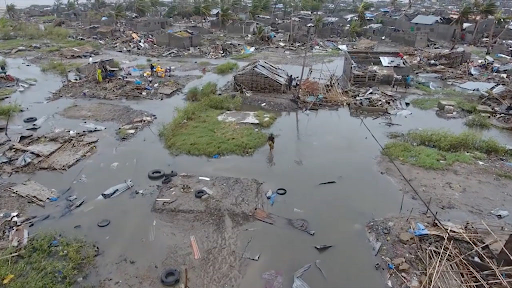COVID in Animals

Since the start of the pandemic, researchers have stayed wary of what it would mean if animals caught COVID. This is because COVID enters human cells by attaching to ACE2 receptors and seeing as many mammals have similar receptors, it would only make sense if animals began to catch the virus as well. However, with no enforcement of safety measures such as masking and social distancing with animals, many were unsure of the effects of coronavirus in creatures.
One of the earlier reported incidents regarding animals with COVID was seen in Denmark. Minks, which is a species in the weasel family closely related to ferrets, are an easily infected species that are highly populated in Denmark due to a large number of mink farms there. The minks on animal farms caught the virus and ended up giving it to many people. To deal with this, the Danish government ordered for millions of minks at more than 1,000 farms to be slaughtered by armed forces. Mink breeding was then banned for months on end to avoid a mink variant of COVID so that there would be no interference with the vaccine.
Next, an outbreak of COVID among 11 hamsters in a pet store in Hong Kong also scared many. The hamsters were speculated to have transmitted it to the pet store employees who, soon after, caught COVID as well, although there is no concrete evidence supporting such a statement. In response, Hong Kong ordered thousands of hamsters to be handed over to the government for testing and thousands more to be killed. Furthermore, an immediate suspension of hamster sales and imports of all rodents was declared. Although there was no evidence that these animals actively passed COVID to humans, the possibility of a mutation alone was reason enough to be cautious.
Now, the United States is dealing with an animal outbreak of COVID of its own: COVID in white-tailed deer. There are an estimated 30 million white-tailed deer in the United States, a species that is native to North America. Scientists fear that the pathogen could spread to other animals in livestock as well as other wildlife species, pets, and to other reserves. Take, for instance, mountain lions which prey on deers and could potentially get it as a side for dinner. This would negatively impact food production stability in numerous ecosystems. Moreover, researchers worry that with such large numbers of COVID in white-tailed deer, another variant might be upcoming. A large issue regarding the population of this species is that they don’t live in confined populations which widens the limitations as to how far the virus in deers can spread. In fact, more than 94% of the deer found in one captive site in Texas carried the antibodies which is more than double the rate recorded in free-ranging deer. Although the specifics of transmission from humans to deer is unknown, it could be via hunters, feeders, remnants of germs, wastewater, discarded food, and much more. What is known for sure is that these deers have an infection period of 5-6 days, and they travel in herds which leave hope for herd immunity with the deer population. The first reported infected deers were found in Iowa but as of recently, the virus in deers has spread as far as Staten Island. As of now, the United States Department of Agriculture has confirmed COVID in deers in 13 other states: Arkansas, Illinois, Maine, Kansas, Massachusetts, Minnesota, New Jersey, New York, North Carolina, Oklahoma, Pennsylvania, Tennessee, and Virginia, several of which even tested positive for antibodies. In Northeastern Ohio, ⅓ of the total deer population has been affected according to the Iowa Department of Natural Resources. Seeing the widespread impact of the virus in deers, scientists are hoping to figure out a way to flatten the curve within the deer population so that these animals don’t become a reservoir for the virus. The only ideas at hand at the moment seem to be potentially vaccinating captive deer populations or thinning infected herds. Until any definitive decision is made, all humans are urged to keep their distance!









